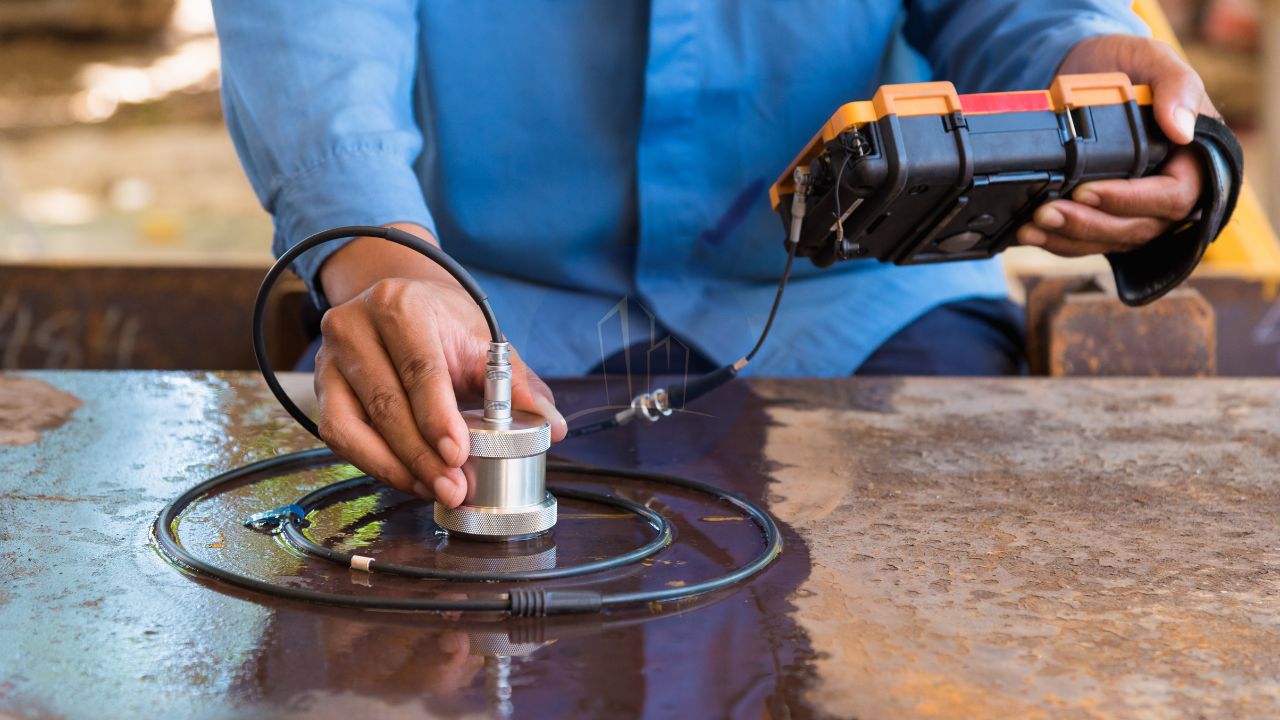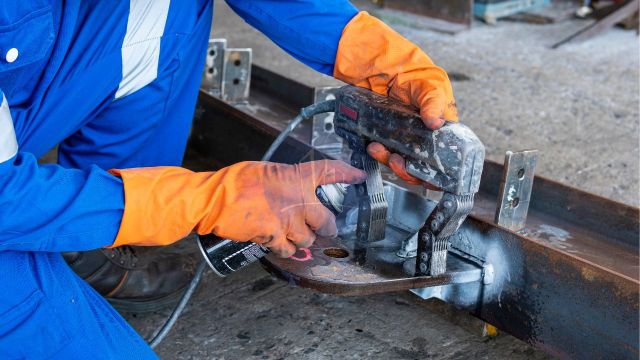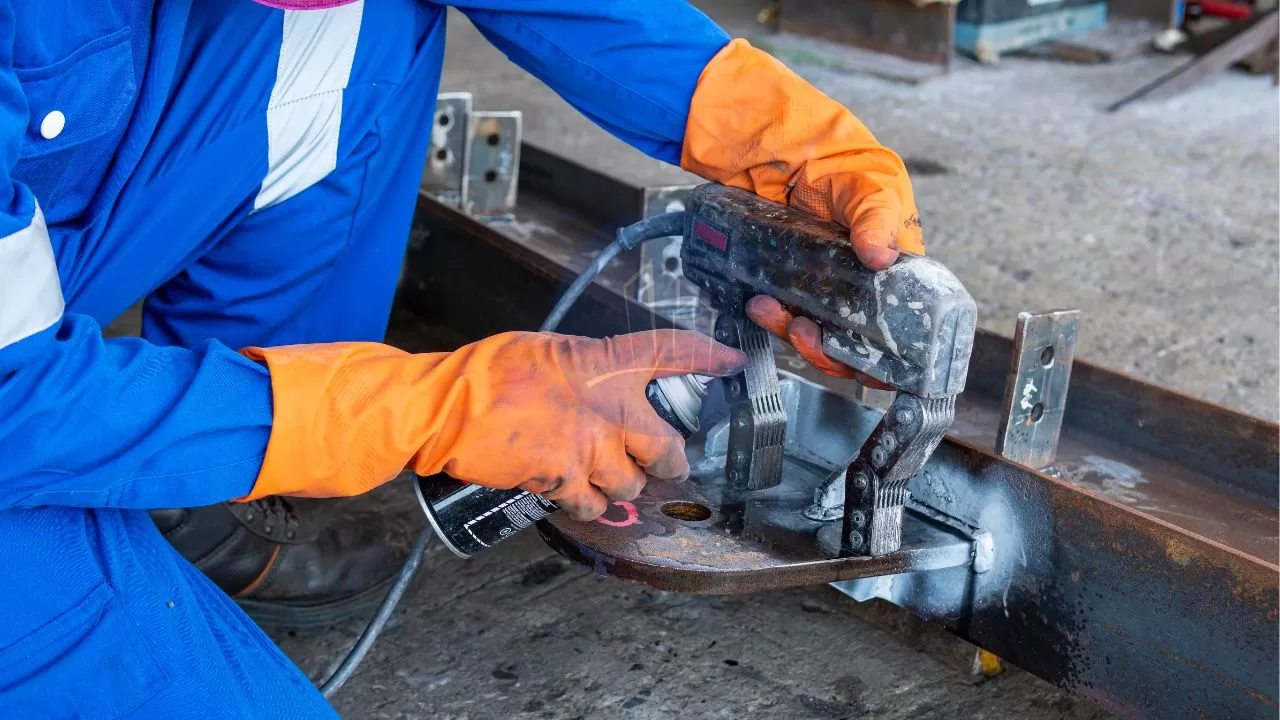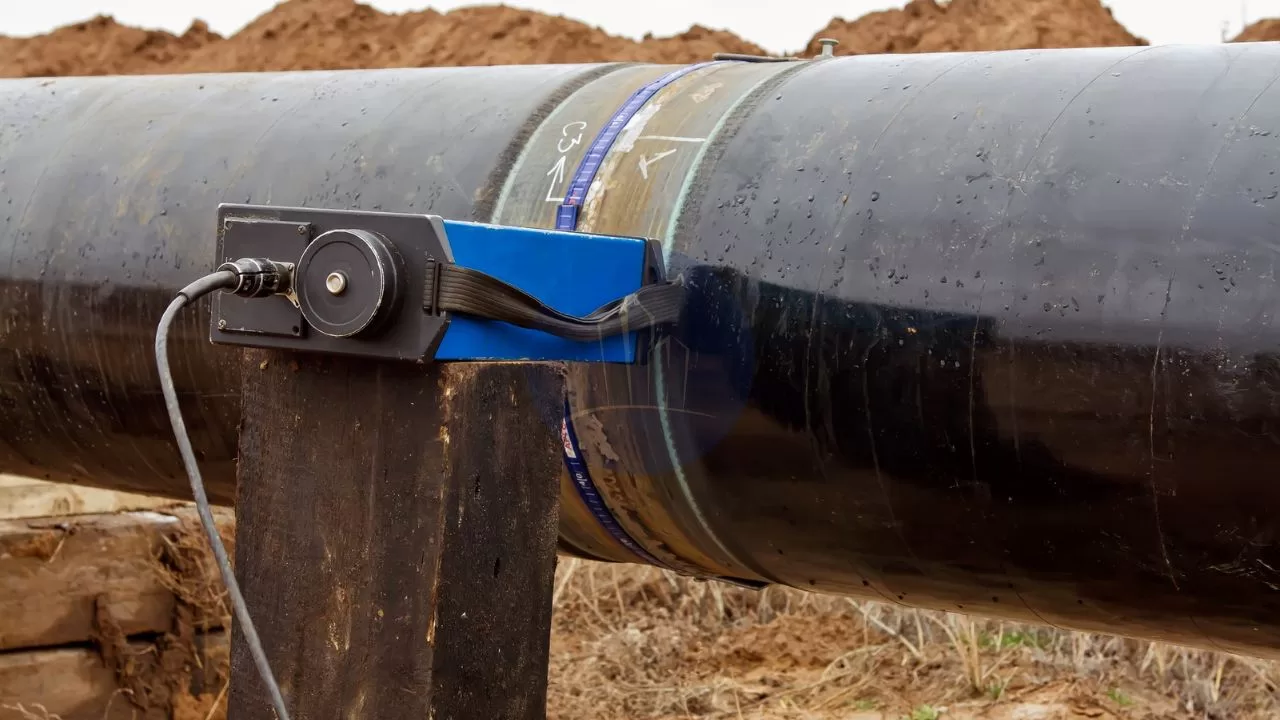Non-destructive testing (NDT) is a crucial technique used widely across industries such as aerospace, construction, and manufacturing. It evaluates the integrity of materials, components, and structures without causing damage. It ensures that defects or flaws hidden beneath surfaces are detected early, preventing potential structural failures. Types of Non Destructive Testing methods and Inspection techniques include ultrasonic testing, magnetic particle inspection, Radiographic testing, and visual inspection. Each technique offers a specialized method for identifying internal or surface flaws.
The meaning of Non Destructive Test lies in its ability to maintain the integrity of the tested material while safeguarding human safety and structural reliability. Among the advantages of NDT are cost efficiency. It eliminates the need to discard or destroy materials. It also provides the ability to inspect in-service structures without interrupting their operation. By implementing Non Destructive testing techniques, industries can ensure ongoing reliability. They can also prevent costly downtime. Additionally, they mitigate the risks of catastrophic failures.
Table of contents
- Importance of Non Destructive Testing (NDT) in Maintaining Structural Integrity
- Methods and Techniques Used in Non Destructive Testing
- Advantages of Non Destructive Testing Over Traditional Testing Methods
- Comparison between Non Destructive Testing Methods and traditional Testing
- Applications of Non-Destructive Testing (NDT) Across Industries
- Training and Certification for NDT Professionals
- Challenges and Limitations of Non-Destructive Testing Methods
- The Future of NDT
- Conclusion
Importance of Non Destructive Testing (NDT) in Maintaining Structural Integrity
Non-Destructive Testing is an indispensable tool for assessing the structural integrity of materials and components without compromising their usability. In industries where safety and reliability are non-negotiable—such as aerospace, civil engineering, and manufacturing—NDT methods are critical. These techniques identify hidden flaws like cracks, voids, or material degradation that, if left undetected, could lead to catastrophic failures. By employing Non Destructive testing techniques, companies ensure that structures can withstand operational stresses. They also make sure these structures meet regulatory requirements and maintain high safety standards. This approach safeguards human lives and financial assets.
Beyond ensuring safety, NDT is also essential for preventive maintenance. Regular inspections using NDT testing methods allow early detection of issues. Issues like fatigue in aircraft parts or small cracks in bridges can be identified early. This early detection enables timely repairs. This proactive approach enhances the longevity of structures, reduces downtime, and boosts operational efficiency. Additionally, NDT’s versatility across a variety of materials—whether metals, composites, or concrete—makes it an ideal choice for quality assurance. These tests are often performed in situ. They do not require dismantling structures, which further underscores NDT’s role in extending the lifespan and reliability of critical infrastructure. This makes it a cornerstone in structural safety and integrity.
Methods and Techniques Used in Non Destructive Testing
Non-Destructive Testing (NDT) uses a variety of techniques. These approaches evaluate the integrity of materials and structures without causing any damage. By employing various NDT testing techniques, industries can find flaws that compromise safety and reliability. This article explores the most recognized types of Non Destructive testing approaches, highlighting their advantages and applications.
Ultrasonic Testing (UT)
Ultrasonic Testing (UT) actively uses high-frequency sound waves to inspect materials with great sensitivity and precision. Technicians direct the sound waves through the material, and any reflections from flaws or defects help detect internal issues. When these sound waves meet a defect, they bounce back to the source. This reflection allows inspectors to analyze the time taken for the waves to return. This data helps decide the size and nature of any internal discontinuities. Ultrasonic test (UT) is particularly effective for metals, weld joints, and composite materials. This makes Ultrasonic test (UT) an essential choice for various industries, including aerospace and manufacturing.
- NDT Advantages: High accuracy, ability to detect internal flaws, and applicability to a wide range of materials.
- Applications: Commonly used in quality control and failure analysis.
Radiographic Testing (RT)
Radiographic Testing (RT) uses X-rays or gamma rays. It creates visual images of the internal structure of objects. This method allows inspectors to detect voids, inclusions, and other internal flaws that may not be visible externally. One of the significant advantages of RT is that it provides a permanent record of the inspection. This record is invaluable for quality assurance and further analysis.
RT helps preserve safety by identifying flaws before they lead to failures. Radiographic Test is frequently used in the oil and gas industry, power generation, and manufacturing.
Safety Protocols: Due to the radiation involved, strict safety measures are essential. These measures protect personnel during testing. They also safeguard the environment.
Magnetic Particle Inspection (MPI)
Magnetic Particle Inspection (MPI) is an effective NDT method for ferromagnetic materials. In this technique, a magnetic field is applied to the material, and fine magnetic particles are introduced. When there are surface or near-surface flaws, they disrupt the magnetic field. The particles cluster at the defect location, making it visible. Magnetic particle Test is Quick, cost-effective, and excellent for detecting surface cracks and discontinuities. MPI is commonly used in the automotive and aerospace industries for quality control.
MPI is an accessible technique. It combines efficiency and reliability in flaw detection. This combination makes it a preferred choice for many professionals in NDT.
Visual Inspection
Visual Inspection is the simplest and most fundamental NDT method. It relies on the inspector’s eyes to assess the condition of materials and components. This technique can identify surface defects, corrosion, and other visible issues without the need for specialized equipment.
Visual Inspection is Essential for initial assessments and routine maintenance checks. They are economical and produce quick results and is used for preliminary evaluations.
Eddy Current Testing
Eddy Current Testing utilizes electromagnetic induction to detect flaws in conductive materials. This method generates eddy currents in the material, and any irregularities in the flow of these currents indicate defects. Eddy current testing is especially effective for surface and near-surface inspections.
- NDT Testing Techniques: Suitable for conductive materials like metals.
- Applications: Frequently used in aerospace and electrical industries for monitoring fatigue.
These Non Destructive testing methods provide a diverse toolbox for ensuring structural integrity across various industries. By understanding and employing these techniques, organizations can maintain safety standards and comply with regulations. This can enhance operational efficiency, ultimately safeguarding both human lives and financial investments.
Advantages of Non Destructive Testing Over Traditional Testing Methods
Non Destructive testing methods offers several advantages over traditional destructive testing methods, making it an indispensable tool in various industries. One major advantage is that Non Destructive Testing examines materials and structures without causing damage. In contrast, traditional testing methods often involve cutting, bending, or breaking samples to assess their properties, rendering them unusable. This characteristic of NDT is particularly advantageous for assessing critical components in operational settings. It maintains the integrity of the structure while ensuring safety.
Another advantage of NDT is its ability to provide immediate results. Many NDT methods, such as Ultrasonic and Magnetic Particle Testing, can be performed on-site with real-time feedback. This immediacy enables engineers and inspectors to make quick decisions regarding maintenance, repairs, or operational adjustments. In contrast, traditional testing methods may require extensive laboratory analysis, leading to longer downtime and delayed decision-making processes. The efficiency of NDT not only enhances operational workflows but also contributes to cost savings by minimizing disruption.
Traditional testing may be restricted to specific materials. It requires specialized equipment. In contrast, NDT adapts to diverse inspections and applications. This adaptability enhances its use in multiple industries. This adaptability makes NDT an ideal solution for non-invasive quality control and safety assessments across sectors.This flexibility enhances quality assurance. It provides comprehensive safety assessments in industries ranging from aerospace and construction to oil and gas. These advantages make NDT a superior choice. NDT maintains structural integrity without compromising the materials being tested.
Comparison between Non Destructive Testing Methods and traditional Testing
| Aspect | Non Destructive testing methods (NDT) | Traditional Testing Methods |
|---|
| Damage to Material | Does not cause any damage to materials or structures | Often involves cutting, bending, or breaking samples |
| Operational Use | Can assess critical components in operational settings without disruption | Renders samples unusable after testing |
| Results | Provides immediate, real-time results in methods like Ultrasonic Testing | Requires extensive laboratory analysis, leading to delays |
| Efficiency | Enables quick decision-making, reducing downtime and enhancing workflows | Results in longer downtime due to sample preparation and analysis |
| Versatility | Can be applied to a wide range of materials and structures | Often limited to specific materials and specialized equipment |
| Cost | Saves costs by minimizing disruptions and extending component life | Higher costs due to the need for sample replacement and longer downtime |
Applications of Non-Destructive Testing (NDT) Across Industries
Non-Destructive Testing (NDT) is indispensable across various sectors. It ensures safety, reliability, and structural integrity. These tests do not damage the materials or components being tested. This makes Non Destructive testing and Inspection methods highly effective for preventive maintenance and quality assurance across multiple industries.
Aerospace Industry
In aerospace, Non-Destructive Testing (NDT) plays a pivotal role in both the manufacturing and maintenance of aircraft components. Techniques like Ultrasonic Testing (UT) are particularly useful for detecting internal flaws. Radiographic Testing (RT) is also essential for identifying issues in critical parts like airframes and engine components. These NDT methods help identify potential defects at an early stage. They ensure that the components are safe for use. This process does not jeopardize flight operations. By conducting regular inspections using NDT techniques, aerospace companies prevent failures. They enhance safety for passengers and crew. These inspections help companies comply with stringent regulatory standards.
The primary advantage here is that NDT tests offer a way to monitor the structural integrity of aircraft. These tests do not cause any damage. This ensures longevity and performance without compromising safety. This is crucial in such a high-stakes industry.
Construction Sector
In construction, NDT techniques are widely applied to inspect concrete structures, piling works, bridges, and tunnels. Methods such as Visual Inspection and Ground Penetrating Radar (GPR) help engineers assess the condition of foundations and structural components . NDT identifies hidden issues without dismantling the structure. It detects voids within concrete or rebar corrosion. This allows for proactive maintenance that helps extend the lifespan of these essential public infrastructures.
The ability of Non-Destructive Testing to detect defects early means fewer costly repairs and reduced downtime. NDT ensures that the infrastructure remains safe for public use. This is especially important in bridges and tunnels. Failure in these areas could lead to severe consequences.
Oil and Gas Industry
In the oil and gas industry, Non-Destructive Testing (NDT) plays a crucial role. It ensures the safety of critical infrastructure such as pipelines. It also safeguards storage tanks and drilling equipment. Techniques like Magnetic Particle Inspection (MPI) and Eddy Current Testing are commonly used. They detect corrosion, cracks, or any flaws. These could lead to leaks or equipment failure. By using NDT techniques, companies can prevent environmental hazards such as oil spills. They ensure the safe transport of hazardous materials.
The major advantage here is that NDT ensures operational safety. It also reduces environmental risks. This enhances sustainability efforts in the industry. By employing NDT methods regularly, the industry can ensure operational efficiency while minimizing risks to human life and the environment.
Automotive Industry
The advantage of using NDT in the automotive industry is its ability to maintain product reliability. It minimizes the need for destructive testing, which would render components unusable. This allows for high-volume production without compromising safety.
By applying Non-Destructive Testing (NDT) across various industries, companies can ensure both safety and reliability. This practice minimizes material waste and reduces operational downtime. NDT methods are versatile and efficient. They are crucial tools in maintaining the integrity of infrastructure. They also help with machinery and transportation systems. Through NDT, industries can uncover defects before they lead to catastrophic failures, safeguarding both human lives and valuable assets.
Training and Certification for NDT Professionals
The success of Non-Destructive Testing (NDT) largely depends on the skills and expertise of the professionals performing the inspections. Proper training and certification ensure that NDT personnel are prepared to conduct accurate and safe assessments. Various organizations provide comprehensive training programs that cover both the theoretical and practical aspects of NDT. These programs emphasize the principles of each testing technique, interpreting results, and using specialized equipment effectively.
Certification is typically governed by standards. Standards include those from the American Society for Nondestructive Testing (ASNT) or the International Organization for Standardization (ISO). Achieving certification means the professional has demonstrated proficiency in specific NDT methods. This process often involves written exams and practical evaluations. Continuing education is also necessary to keep up with technological advancements and industry best practices. Ongoing professional development is crucial as new techniques and equipment constantly emerge. By investing in training and certification, organizations create a competent workforce. This workforce can uphold high safety and reliability standards across industries.
Challenges and Limitations of Non-Destructive Testing Methods
Non-Destructive Testing (NDT) faces several challenges and limitations that can influence its accuracy and reliability. One key limitation is the dependence on skilled personnel. They must correctly interpret results. Improper techniques may result in false readings or missed defects. Additionally, NDT methods may not be suitable for every material or structure. Some techniques may have difficulty with complex geometries. Other techniques may struggle with thick components.
Environmental factors can interfere with certain NDT techniques. These factors include temperature, humidity, and surface contaminants. This interference impacts the accuracy of the assessments. Furthermore, the cost of advanced NDT equipment can be prohibitive for smaller companies. This high cost restricts their ability to fully implement these crucial testing methods.
The Future of NDT
The future of Non-Destructive Testing (NDT) looks promising with innovations that are enhancing its applications across many industries. Artificial Intelligence (AI) and machine learning are transforming NDT. They rapidly analyze data. This allows for faster and more precise defect detection. These technologies not only improve the effectiveness of traditional NDT methods but also optimize workflows.
Additionally, more portable and user-friendly NDT equipment is being developed, making inspections easier to perform in the field. These advancements expand NDT’s reach and improve safety and reliability in industries like aerospace, construction, and oil and gas. As companies adopt these cutting-edge technologies, NDT strengthens its role in maintaining structural integrity. It reduces downtime. It fosters a proactive maintenance culture.
Key Takeaways
- Critical Role of NDT: Non-Destructive Testing (NDT) is essential for ensuring the safety and longevity of structures without causing damage.
- Common Methods: Techniques like ultrasonic, radiographic, and magnetic particle testing are widely used in various industries.
- Advantages Over Traditional Methods: NDT offers cost-efficiency, safety, and the ability to detect flaws without damaging the materials.
- Wide Applications: NDT is crucial in sectors such as aerospace, construction, and manufacturing to maintain quality and compliance.
- Professional Training: Certification and training for NDT professionals are vital to uphold standards and ensure effective testing.
- Emerging Technologies: Innovations like AI and portable devices are enhancing the capabilities and efficiency of NDT.
- Challenges: Despite its advantages, NDT faces challenges such as high initial costs and the need for skilled technicians.
Conclusion
In conclusion, Non-Destructive Testing (NDT) is critical in many industries. It ensures the integrity and safety of structures without compromising their material properties. Its diverse methods, including ultrasonic and radiographic testing, offer significant advantages such as cost savings and enhanced safety. Emerging technologies like artificial intelligence and advanced imaging are continuing to evolve. As they do, NDT is set to become even more efficient and effective. However, challenges remain, including the need for skilled professionals and the initial investment in equipment. By addressing these challenges, industries can maximize the benefits of NDT. Embracing technological advancements leads to safer and more reliable infrastructure. The future of NDT holds great promise for improving quality assurance and compliance standards globally.








